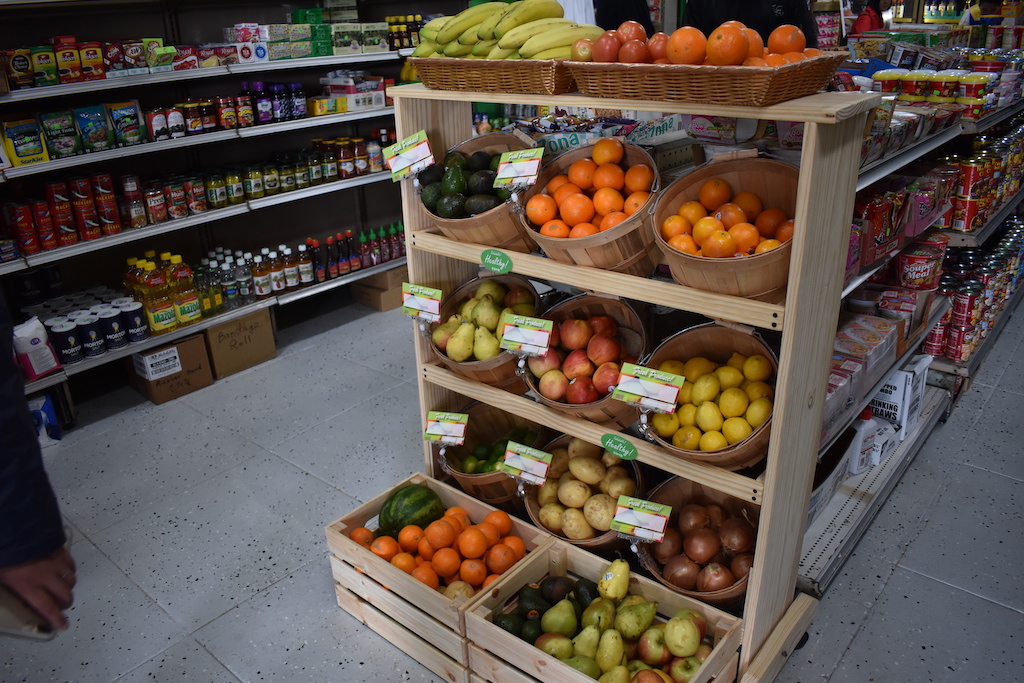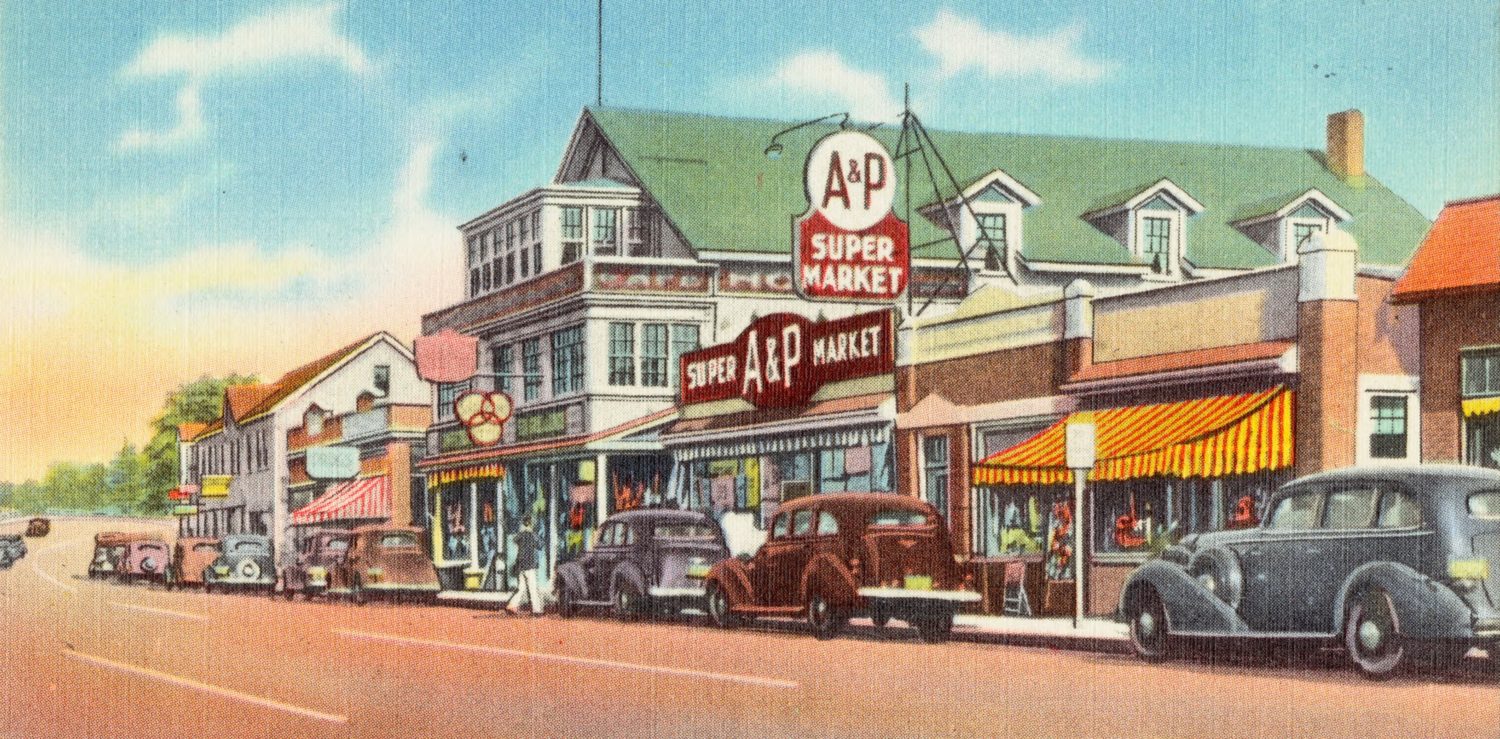
Los Angeles Food Policy Council
Earlier this month, Danny Park reopened his parents’ Los Angeles corner store. Best Market, as it was known, was in many ways an ordinary mom-and-pop shop. Park and his mother worked the register. They sold sundries, like batteries, Pepto-Bismol, Mentos and rolling papers. Racks of chips and candies sat near the entrance. The store’s two aisles of food were stocked with pantry staples, like beans, tuna, jam, and bread. Drinks were in back.
The Skid Row Peoples’ Market, as it’s now called, is different. The store has been redesigned and repainted, with new flooring, refrigerators, and a freezer. There’s a fresh produce section: a tasteful, wooden end-cap display, stocked with bananas, pears, avocados, and cucumbers donated for sale by Imperfect Produce. At a remodeled deli counter, Park sells $3 potato and pasta salads, which he makes at a downtown kitchen shared with a business partner.
In an impassioned phone interview, he tells me of his idealistic vision of bringing healthy, affordable food to a neighborhood where it’s hard to come by.
“There’s an abundance of food for some people, but not all people,” Park says. “The system has got to change.”
 Los Angeles Food Policy Council
Los Angeles Food Policy Council The corner store formerly known as “Best Market” recently reopened as Skid Row Peoples’ Market. Its “transformation” is backed by the Los Angeles Food Policy Council
This isn’t an ordinary neighborhood. It’s Skid Row, a 54-block area just outside downtown Los Angeles that houses nearly 4,200 homeless people, one of the largest such populations in the country. Due to their transience, demographic data on the neighborhood fluctuates, but the homeless could amount to as much as one-quarter of the people who live there. Tents crowd the sidewalks. At night, an estimated 1,800 unsheltered people share nine public toilets, a ratio that violates the United Nations standards for refugee camps.
A recent survey conducted by the Los Angeles Community Action Network, a local nonprofit that organizes around homelessness issues, finds food insecurity at epidemic levels. When people are eating, it’s most often a soup kitchen-style meal at a charity, or donated junk food. There are 16 corner stores in the neighborhood, and no full-service grocery store; the nearest affordable option, a discount chain called Food 4 Less, is over two miles away. Nearly 45 percent of people don’t have enough equipment or refrigeration to cook their own meals.
“When you need to survive, you can map it out in your mind,” says Todd Cunningham, an organizer with the network. He rattles off the local sources of free food: the homeless mission that serves hot meals, the people giving away food from the back of their truck, or garbage bags filled with tossed-out sandwiches and desserts from a nearby Starbucks.
Park’s plan is to be a key location on that map, offering fresh produce and other healthy fare in a neighborhood where access is far from guaranteed. Prepared foods, like the salads Park is selling, are an important service in a neighborhood where thousands of potential customers don’t have access to kitchens, either because they’re unhoused, or because they’re living in a shelter or transitional facility. People without kitchens aren’t likely to buy vegetables they can’t cook.
The effort is unlikely to transform the neighborhood, which faces challenges no individual retailer can solve. Still, it makes sense that a store offering affordable, healthy food could make a daily difference in the lives of homeless people, even if it can’t solve the greater systemic issues. And on that front—converting a corner store into something more wholesome and sustaining—Park has a lot of help.
That’s no easy task. Many corner stores rely on large companies like Frito-Lay, Coca-Cola, and MillerCoors to deliver products straight to the store and set up their displays, says Jeff Lenard, a spokesman for the National Association of Convenience Stores (NACS). Independent store owners often can’t afford to pay “broadline” distributors who carry produce because they tend to require higher-volume orders and deliveries. And corner stores that do find ways to buy smaller volumes of produce end up paying a higher price per item, and pass those costs down to customers.
“When the customer can go to the grocery store and buy an apple for 60 cents, but at the convenience store it’s twice that, the presumption is that the convenience store is marking up the product too much. But it’s actually related to the cost of getting the product,” Lenard says.
Instead of working with distributors, corner store operators often find it easier to buy their produce on an as-needed basis at wholesale clubs, like Costco or Sam’s Club. After all, most of them don’t have walk-in refrigerators or even sizable enough back rooms in which to store inventory. It’s a strategy known in the business as “cash and carry,” and it’s common for convenience store owners to increase those prices in their own stores, sometimes charging double the retail price, even in communities that can’t afford to pay them.
“They’ll see what’s on sale, and mark them up 50, 80, or 100 percent,” says Clare Fox, the policy council’s director.
In other instances, owners or managers might buy goods at a supermarket, where smaller quantities mean less spoilage, but prices are higher. Or they’ll turn to what the Centers for Disease Control and Prevention (CDC) has called an “independent delivery service”—basically, a middleman who buys at the docks or the wholesale market. “Sometimes, they’re buying from produce trucks that roll around the neighborhoods, doing different spot purchases,” Fox adds. “The quality’s not great, but they’ve ‘got a guy.’”
Without nonprofit partners and government grants—such as the USDA grant that Fox calls the program’s “start-up capital”—economic forces might bar corner store owners from the fresh food market. “Produce distribution is not money-making, and a difficult thing to start,” Fox says. “It is definitely break-even, and still part of the nonprofit structure.”
This isn’t just about keeping enough inventory on hand. Karen Shore, director of The Food Trust, a Philadelphia-based nonprofit that has pushed for produce in corner stores since the early 2000s, encourages shop owners to accept federal benefits, like the Supplemental Nutrition Assistance Program (SNAP, formerly food stamps) and the Women Infants and Children Program (WIC). Both require sometimes arduous application processes that take months of paperwork; WIC stores must carry a specific selection and quantity of breads, produce, dairy, and other foods.
The payoffs are significant. In some cases, according to CDC, SNAP purchases are the bedrock of mom-and-pop stores, which have thin margins and heavy workloads. Some stores reported that fruit sales were spiked between the 2nd and 20th of the month, when customers received their benefits.
 Los Angeles Food Policy Council
Los Angeles Food Policy Council Healthy prepared foods, like the kind Park is selling, are an important service in a neighborhood where thousands of potential customers don’t have access to kitchens
Corner stores also need to be able to make their goods look attractive enough to buy. That’s why, besides introducing stores to the procurement network, the policy council also gives stores a makeover. That can mean new marketing displays—signage to advertise the produce—and in-store displays, like price cards and produce baskets.
Sometimes, it can mean a complete renovation. Hank’s Mini Market, a 22-year-old liquor store in Hyde Park, a neighborhood near the airport, boasts a window facade, new refrigerators, and updated flooring, lighting, and tasteful, waist-high shelving. The food policy council brokered a significant donation from a fast-casual restaurant chain, Sweetgreen, and a California FreshWorks grant of $15,000, according to Alba Velasquez, the policy council’s program director.
Kelli Jackson, who inherited the market from her father, continues to sell corner-store staples like soap, toilet paper, and canned foods, as well as beer and wine. The liquor is stored behind the counter. The floor is open and spacious. The refrigerators are filled with produce. It kind of looks like a Sweetgreen.
“We can’t pay for refrigerators or facade improvement on our own,” Fox says.
There’s not a lot of evidence that these interventions are sustainable. Danielle Ngo, an associate at PolicyLink, a research institute based in Oakland, California, points to a lack of longitudinal studies about selling produce in corner stores. Possibly, it’s because many of the projects are backed for only a few years, she says.
A report by the Food Trust, for example, showed it brought produce to 660 corner stores in Philadelphia. The nonprofit collected point-of-sale data from five of those stores, and found significant increases in produce sales there, Shore says. She estimates that 80 percent of retailers elect to remain in healthy store programs.
The business case for selling produce in poor neighborhood isn’t clear, either. Park and others point out that most Skid Row residents are housed, despite the significant homeless population. He expects them, along with the professional clientele who work at the neighborhood’s service agencies, to be able to afford his food. But he couldn’t say if the thousands of unhoused people who don’t eat regular meals, and depend on what they come by—quick hits of carbs and sugar, for instance—would be able to do the same.
That’s a complicated dynamic. Perhaps, then, the victory is more symbolic. “Danny is not going to solve food insecurity in Skid Row,” Fox says. “There’s no way that he could alone put a dent in food insecurity. But he can be a really important catalyst for elevating their needs.”
Correction: Produce sales increased in five stores studied by The Food Trust, and not two, as previously reported. Also, Hank’s Mini Market is located in the Los Angeles neighborhood of Hyde Park, not the suburb of Inglewood.










